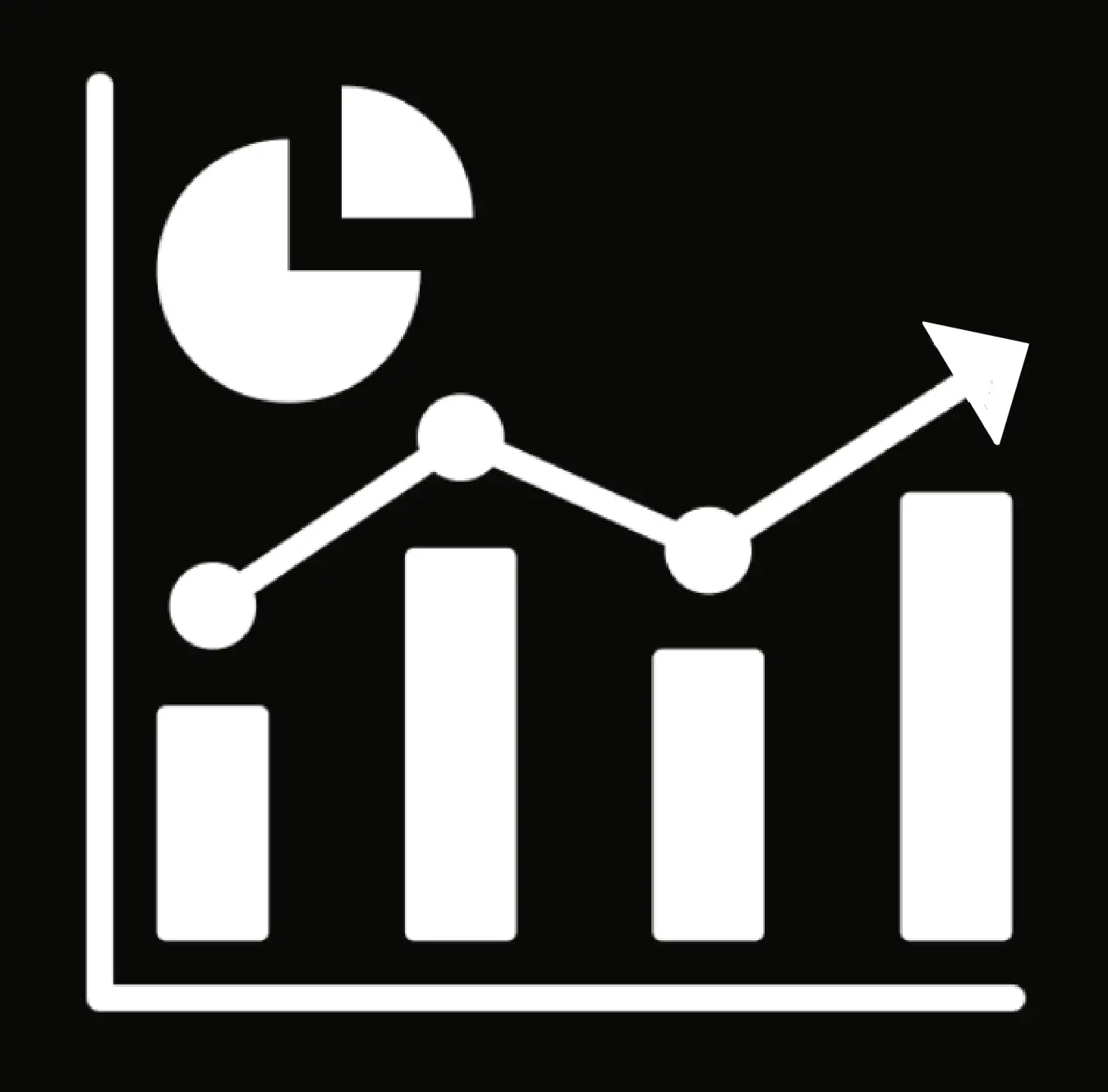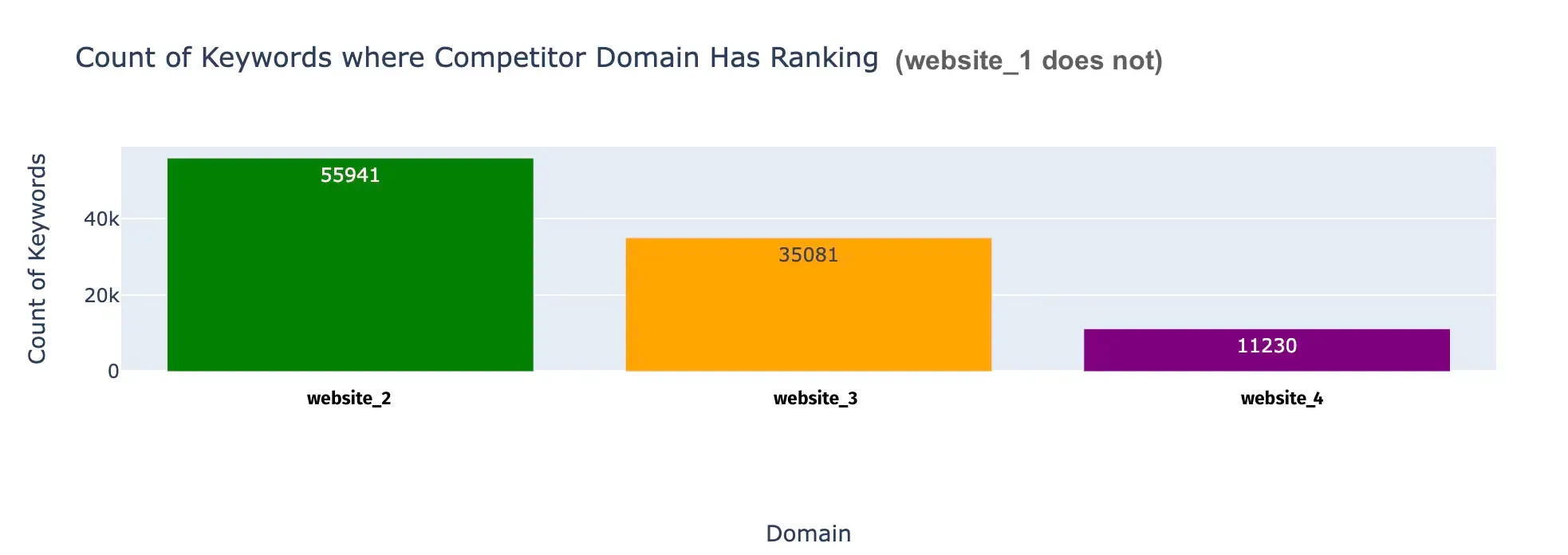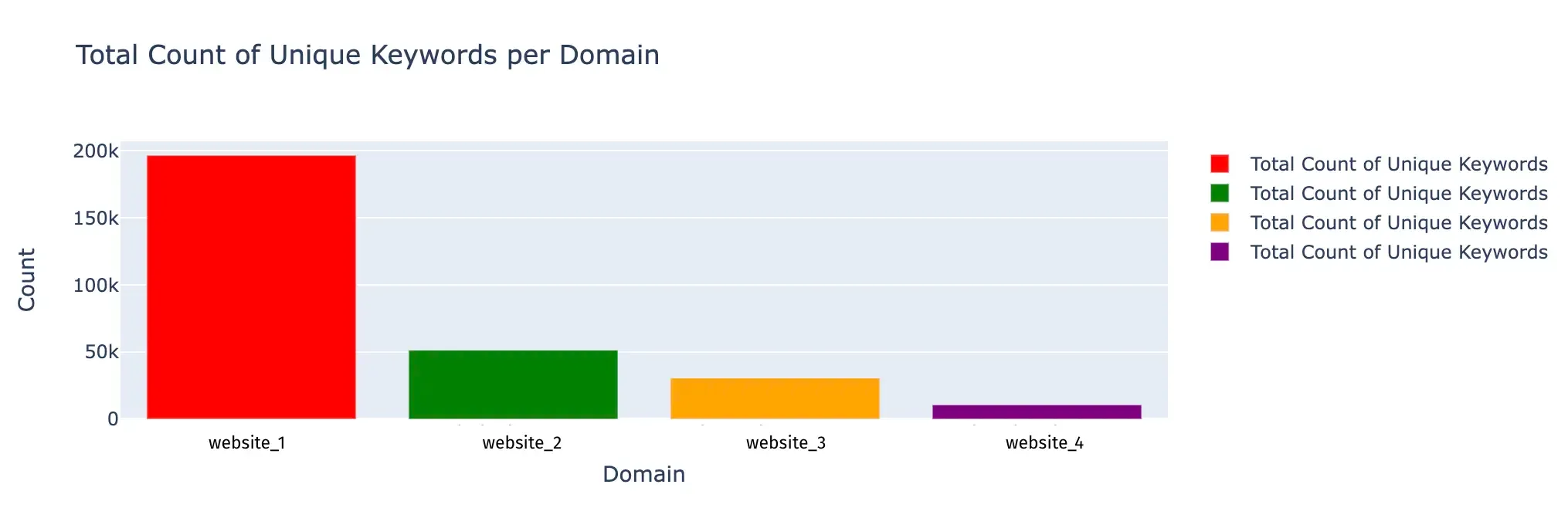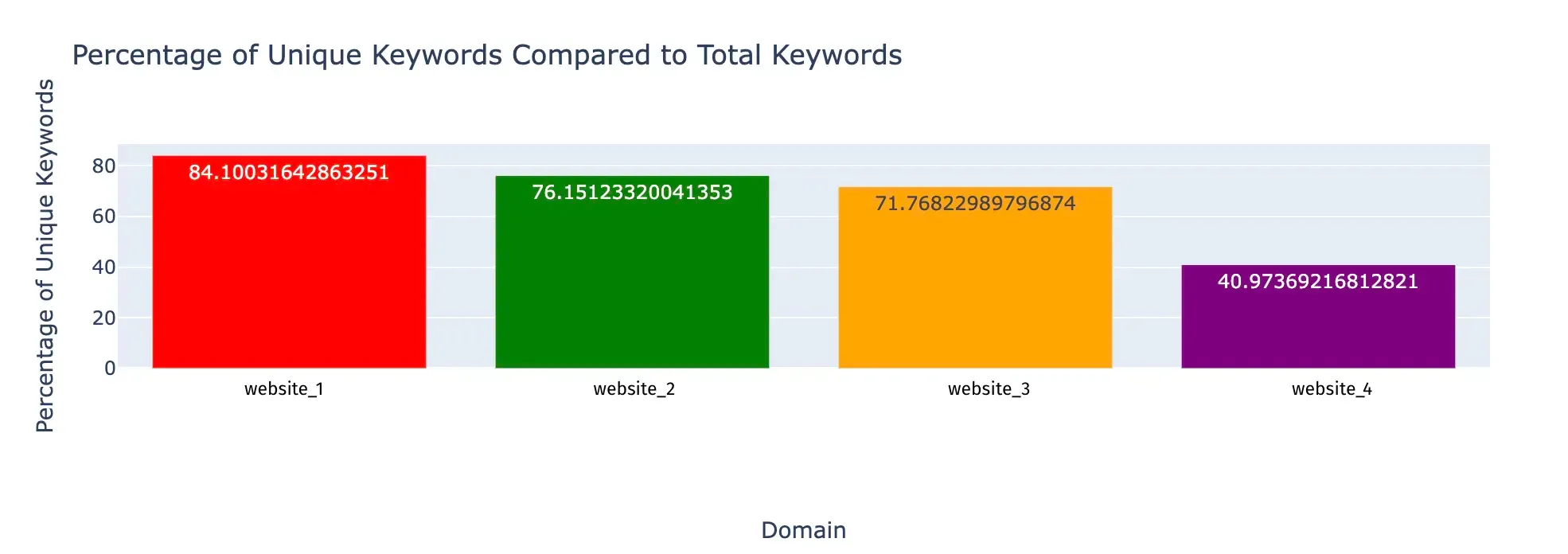Custom Reporting and Analysis
Custom Reporting/Dashboards, Large Dataset Analysis, Machine Learning & NLP Actionable Insights, SEO Forecasting, Voice Search and Conversational Analytics, SEO TAM(Total Adddressable Market), Search Demand Models, Real-Time SEO Dashboards, Keyword Gap Analysis, Internal Link Analysis, Log Files Analysis

-
Custom Reporting/Dashboards: Curated reports and dashboards to help clients make data-driven decisions and track key performance indicators (KPIs). Visualizations and Dashboards using Looker, Tableau, Excel, Kibana, Grafana, AWS, Jupyter/Jupyverse, Observable, Google Collab, Google Sheets, Dash, and others.
-
Data Visualization: Creating data visualizations to help clients understand their SEO performance and trends. Using tools like Matplotlib, Seaborn, Plotly, Dash, D3.js
-
Large Dataset Analysis: Analyzing massive datasets to uncover hidden trends, patterns, and insights that inform SEO strategies. There almost always isn’t a single point of failure when looking at SEO performance data and Technical SEO issues, but proper analysis and impact asssessment can help identify the most significant factors.
-
Machine Learning & NLP Actionable Insights: Applying machine learning and natural language processing (NLP) techniques to identify actionable insights from large datasets. Machine learning model output, NLP-based sentiment analysis report, and insights on user behavior and intent.
-
Voice Search and Conversational Analytics: Analyzing voice search data to identify conversational patterns, intent, and trends that inform SEO strategies.
-
Search Demand Models: Building predictive models to forecast search demand patterns, identifying trends, and informing SEO strategies.
-
Keyword Gap Analysis: Identifying gaps in keyword coverage to inform SEO strategies and optimize content.
-
Internal Link Analysis: Analyzing internal linking patterns to identify opportunities for improvement, optimize website structure, and enhance user experience.
- e.g. Using networkx
import pandas as pd
import networkx as nx
import matplotlib.pyplot as plt
# Load the data
df = pd.read_csv('internal_links.csv')
# Create a directed graph
G = nx.from_pandas_edgelist(df, source='source', target='target', create_using=nx.DiGraph())
# Basic graph analysis
print("Number of nodes:", G.number_of_nodes())
print("Number of edges:", G.number_of_edges())
# Identify the most linked pages (in-degree)
in_degree = dict(G.in_degree())
sorted_in_degree = sorted(in_degree.items(), key=lambda x: x[1], reverse=True)
print("Most linked pages:", sorted_in_degree[:10])
# Identify the most linking pages (out-degree)
out_degree = dict(G.out_degree())
sorted_out_degree = sorted(out_degree.items(), key=lambda x: x[1], reverse=True)
print("Most linking pages:", sorted_out_degree[:10])
# Visualize the graph
plt.figure(figsize=(12, 8))
pos = nx.spring_layout(G, k=0.15)
nx.draw(G, pos, with_labels=False, node_size=50, node_color='blue', edge_color='gray')
plt.title('Internal Link Structure')
plt.show()- Log Files Analysis: Analyzing log files to track user behavior, identify trends, and inform SEO strategies.
- e.g. using matplotlib
import pandas as pd
import matplotlib.pyplot as plt
import re
# Function to parse log file
def parse_log_line(line):
pattern = r'(\S+) - - \[(.*?)\] "(\S+) (\S+) \S+" (\d+) (\d+)'
match = re.match(pattern, line)
if match:
return match.groups()
return None
# Read log file and parse each line
log_data = []
with open('access.log') as file:
for line in file:
parsed_line = parse_log_line(line)
if parsed_line:
log_data.append(parsed_line)
# Convert to DataFrame
columns = ['ip', 'timestamp', 'method', 'url', 'status', 'size']
df = pd.DataFrame(log_data, columns=columns)
# Convert timestamp to datetime
df['timestamp'] = pd.to_datetime(df['timestamp'], format='%d/%b/%Y:%H:%M:%S %z')
# Basic analysis
print("Total requests:", len(df))
print("Unique URLs:", df['url'].nunique())
print("Status code distribution:\n", df['status'].value_counts())
# Plotting the distribution of status codes
plt.figure(figsize=(10, 6))
df['status'].value_counts().sort_index().plot(kind='bar')
plt.xlabel('Status Code')
plt.ylabel('Number of Requests')
plt.title('Distribution of HTTP Status Codes')
plt.show()- SEO Forecasting: Using data-driven approaches to forecast future SEO trends, opportunities, and challenges. Forecasting via Facebook Prophet, Google’s Causal Impact tool, ARIMA (AutoRegressive Integrated Moving Average), and others
- e.g. Facebook Prophet
from fbprophet import Prophet
import pandas as pd
# Load your data
df = pd.read_csv('your_seo_data.csv')
df['ds'] = pd.to_datetime(df['date'])
df['y'] = df['organic_traffic']
# Create and fit the model
model = Prophet()
model.fit(df)
# Make a future dataframe
future = model.make_future_dataframe(periods=365)
forecast = model.predict(future)
# Plot the forecast
fig = model.plot(forecast)- e.g. Google Causal Impact
from causalimpact import CausalImpact
import pandas as pd
# Load your data
data = pd.read_csv('your_seo_data.csv')
# Define pre and post intervention periods
pre_period = ['2020-01-01', '2020-06-30']
post_period = ['2020-07-01', '2020-12-31']
# Run Causal Impact analysis
ci = CausalImpact(data, pre_period, post_period)
print(ci.summary())
ci.plot()- e.g. ARIMA
import pandas as pd
import numpy as np
import matplotlib.pyplot as plt
from statsmodels.tsa.arima.model import ARIMA
# Load the data
df = pd.read_csv('seo_traffic.csv', parse_dates=['date'], index_col='date')
# Ensure the data is sorted by date
df = df.sort_index()
# Plot the data to visualize it
df['organic_traffic'].plot(figsize=(12, 6))
plt.title('Organic Traffic Over Time')
plt.xlabel('Date')
plt.ylabel('Organic Traffic')
plt.show()
# Define the model
model = ARIMA(df['organic_traffic'], order=(5, 1, 0))
# Fit the model
model_fit = model.fit()
# Print the model summary
print(model_fit.summary())
# Forecast the next 12 periods (e.g., months)
forecast_steps = 12
forecast = model_fit.forecast(steps=forecast_steps)
forecast_index = pd.date_range(start=df.index[-1], periods=forecast_steps + 1, closed='right')
# Create a DataFrame to hold the forecast
forecast_df = pd.DataFrame(forecast, index=forecast_index, columns=['Forecast'])
# Plot the original data and the forecast
plt.figure(figsize=(12, 6))
plt.plot(df['organic_traffic'], label='Historical Data')
plt.plot(forecast_df, label='Forecast', color='red')
plt.title('Organic Traffic Forecast')
plt.xlabel('Date')
plt.ylabel('Organic Traffic')
plt.legend()
plt.show()- SEO TAM (Total Addressable Market): Identifying the total addressable market size for a specific keyword or topic, providing insights on competition and opportunity.
- e.g. SEO_TAM_unique_competitor_rankings

- e.g. SEO_TAM_count_unique_keywords

- e.g. SEO_TAM_percentage_unique_keyword

- e.g. SEO_TAM_sum_search_volume_keywords

- e.g. SEO_TAM_top_performing_categories

- e.g. SEO_TAM_total_semrush_traffic
